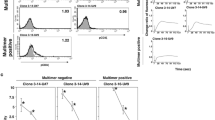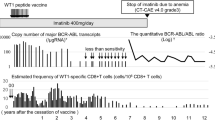Abstract
In recent years significant progress in the understanding of the immune biology of melanoma has evolved from the identification of melanoma antigens (MAs) recognized by T cells. MAs consist of intracellular proteins that are expressed on the surface of cancer cells in association with human leukocyte antigen (HLA) class I molecules and therefore are suitable targets for cytotoxic T lymphocytes (CTLs). Several new monitoring strategies have been implemented to evaluate the status of activation and localization of vaccine-induced T cells in the peripheral circulation as well as the tumor site, including limiting dilution, in vitro sensitization, and ELISPOT. Previous studies aimed at monitoring patients receiving vaccination have utilized mainly those three methods. These methods have demonstrated that antigen-specific vaccination can elicit immune responses detectable in the peripheral blood of immunized patients. These assays, however, have been faulted by their requirement for in vitro expansion of T cells (limiting dilution or in vitro sensitization) or for limited sensitivity (ELISPOT). More recently, the use of soluble HLA/peptide complex tetramers, intracellular fluorescence-activated cell sorting (FACS) analysis, and real-time polymerase chain reaction (PCR) has been proposed for the monitoring of vaccine trials. These methods have the appeal of allowing direct enumeration of T cells specific for a particular epitope within relevant samples such as peripheral blood lymphocytes, lymph nodes, and tumors. We are evaluating whether utilizing a combination of HLA/peptide tetramer (tHLA) together with Taqman-based real-time reverse-transcription (RT)-PCR and intracellular FACS analysis could establish a direct and comprehensive strategy for the assessment of epitope-specific immune response in vivo. In conditions close to those of the tumor microenviroment or in peripheral blood lymphocytes, however, a different status of T cell activation can be expected due to a direct stimulation of T cells by tumor or antigen-presenting cells. We observed that activated T cells can easily be detected in the peripheral blood of patients who have received MA-specific vaccines. However, when T cells are stimulated with their relevant epitope, a high level of T cell receptor downregulation occurs that does not allow identification of vaccine-specific T cells directly with tHLA. Thus evaluation of epitope-specific T cells at the tumor site, where they might be exposed to stimulation by interaction with tumor cells and/or in bulk peripheral blood mononuclear cells, might be more efficiently analyzed with functional methods such as intracellular FACS and Taqman-based real time RT-PCR.
Similar content being viewed by others
Author information
Authors and Affiliations
Rights and permissions
About this article
Cite this article
Nielsen, MB., Marincola, F. Melanoma vaccines: the paradox of T cell activation without clinical response. Cancer Chemother Pharmacol 46 (Suppl 1), S62–S66 (2000). https://doi.org/10.1007/PL00014052
Issue Date:
DOI: https://doi.org/10.1007/PL00014052




